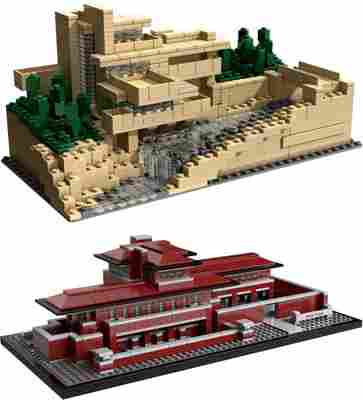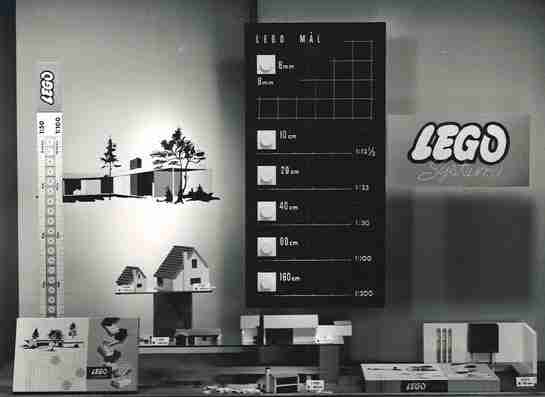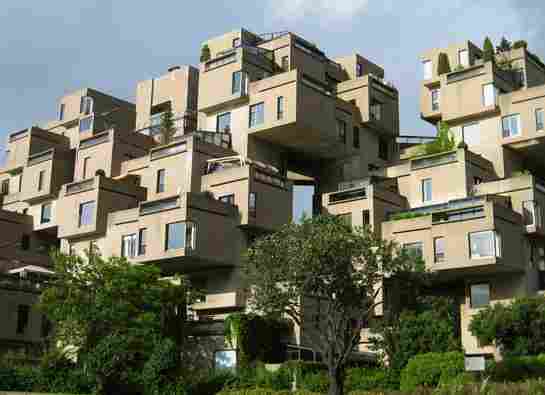The building materials were on site, the plans laid across the table. The would-be client, surveying the detailed drawings, cast a discerning eye and asked: “Are there any doors?”
The client was my daughter Sylvie, all of three, and the presumptive building happened to be the Villa Savoye. Not Le Corbusier’s landmark machine for living in Poissy, France, but an exceedingly faithful, if slightly abstracted, collection of 660 Lego blocks waiting to take shape on my dining room table. (Hey, Le Corbu didn’t exactly bring the project in on time or on budget, either.)

The villa is the latest in Lego’s “ Architecture ” series, joining a global range of iconic structures ranging from Ludwig Mies van der Rohe’s Farnsworth House to Jørn Utzon’s Sydney Opera House to Frank Lloyd Wright’s Robie House. The seemingly far too sophisticated series (the box indicates it is intended for ages 12 and up) is a natural fit for Lego for several reasons, the most obvious being that many an architect, at least anecdotally, spent time building with construction toys as a child—Lego’s own research suggests, if unscientifically, that a staggering 99 percent did, including David Chipperfield and Sir Nicholas Grimshaw. (Future IT workers, the company found, favored computer games.)
Well before Lego—invented by Ole Kirk Christiansen, a Danish carpenter, in 1932—blocks were the foundation of many an architect’s career. Bauhaus stalwart Marcel Breuer claimed a child’s discovery of structure and volume through them made him or her a de facto architect: “Manager of voids and spaces, priest of geometry.” Frank Lloyd Wright claimed the “smooth shapely maple” surfaces of Froebel blocks never left his fingers: “Form became feeling.” Buckminster Fuller didn’t even need blocks, famously constructing a tetrahedral octet truss from dried peas and toothpicks.

But Lego, with its interlocking, standardized parts, space-age materials, and primary colors, seemed particularly well suited to modernism. The company first launched an architectural line in 1962, inspired by owner Godtfred Kirk Christiansen’s (the founder’s eldest son) desire to expand the Lego building range by introducing five new “bricks” that matched the footprint of existing ones. “This greater Lego flexibility,” the company notes, “seemed to match the spirit of the age; modernist architects were redefining how houses looked, and people were taking an active interest in the design of their dream home.” The house on the cover of the “Scale Model” line, as it was called, wouldn’t have looked out of place in the atelier of Albert Frey.

It hardly hurt that so many modernist structures looked as if they were built from Lego. When the company asked consumers to vote for future entries in the architectural series, the winning entry was Moshe Safdie’s Habitat 67, the concrete ziggurat built from the architect’s long-envisioned “three-dimensional modular building system.” That sounds—and looks—a lot like Lego. Modern-day Danish wunderkind Bjarke Ingels took all this to its logical conclusion when he presented, in 2007, a project dubbed “Lego Towers,” a 1:50 scale model comprised of some 250,000 bricks, as his proposal for a residential, retail, and hotel development in Copenhagen.
And, of course, the Lego Villa Savoye is itself an architectural construction, requiring careful and creative design. Le Corbusier’s “box in the air,” as the Swiss pioneer called it, is here not simply a crudely pixilated assemblage of blocks or a set of bespoke bricks crafted from a CAD file. (The Savoye is even essentially free of furniture, as Le Corbusier intended.) The model, which was developed in collaboration with German architect Michael Hepp and went through 15 iterations, uses only existing Lego pieces, and Le Corbusier’s famed pilotis were originally made up of one-by-one-inch round bricks. But Hepp notes, “They always seemed oversize,” so he reached for a surprising piece in the Lego arsenal: lightsabers from its Star Wars line.
What links the Villa Savoye and Habitat 67 is not simply their status as objects of Lego desire, but that both buildings, despite their rigidly rational reputations, were flawed. Habitat was never as purely modular or preassembled as promised, while Le Corbusier’s structure was legendarily leaky.
And so maybe one of the myriad joys of the Lego Architecture series is that it gets us back to some original founding ideal of modernism, where perfect theories come into perfect play with a perfectly engineered snap, without any intrusion from clients, however young, with their probing questions—and hands. For there is one building piece missing in the series: inhabitants.
